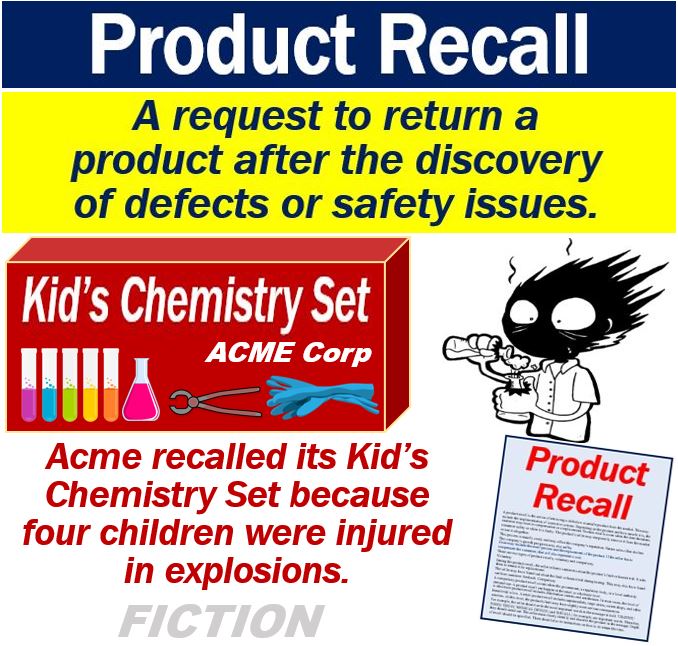A product recall is the action of retrieving a defective or unsafe product from the market. This may include the implementation of corrective actions. Depending on the product and how unsafe it is, the customer may receive compensation or a replacement.
Product recalls occur when the item threatens consumer safety or when it is faulty. The product’s seller may temporarily remove it from the market or ban it altogether.
This process is usually costly and may affect the company’s reputation. Future sales often decline. The company’s growth prospects may also suffer.
Costs may include the recall process and the replacement of the product. If the seller has to compensate the consumer, that will also represent a cost.
The two types of product recall
There are two types of product recalls, voluntary and compulsory.
Voluntary
During the product recall, the seller informs customers about the product’s fault or hazard risk. It asks them to return it for replacement.
The seller may have found out about the fault or hazard risk during testing. They may also have found out from customer feedback.
Compulsory
A compulsory product recall occurs when the government, a regulatory body, or a local authority demand one.
A product recall can happen at the retail or wholesale level
A wholesale product recall includes distribution centers and warehouses. In most cases, the level of hazard risk is low.
A retail product recall includes supermarkets, large stores, corner shops, and other retailers. At this level, the product’s defect may have slightly more serious consequences.
With a consumer product recall, the seller targets the purchaser or consumer. The consumer is not always the same as the purchaser. In these cases, there is a greater risk to the consumer’s health or safety.
The seller may inform consumers about a recall through a press release or public notification. It may also send emails if it has the customer’s details.
If the consumer’s life or health is at risk, the seller will either telephone, organize personal visits, or do both.
The FDA recommends that recall notifications should be short, clear, and with the highlighting of the important words. FDA stands for Food and Drug Administration.
For example, the seller should write the most important words in the message in bold. ‘URGENT,’ ‘FOOD,’ ‘DRUG,’ ‘MEDICAL DEVICE,’ and ‘RECALL,’ for example, are important words. Therefore, they should stand out.
The seller must clearly identify and describe the product in the message. The depth of the recall should be specified. There should also be instructions on how to return the item.

In the image above the fictional company ‘ACME Corp’ had to recall its chemistry set because children were injured by using the product. If a company has to recall its biggest seller, it could be in serious trouble.
Product recall procedures
Product recall procedures vary and depend on the company, product, as well as local legislation.
For example, the FDA recommends that companies issue the following information and instructions:
- Remove product from sale.
- Stop distribution.
- Sub recall (if appropriate).
- Return product.
- Product correction.
Recent example of a massive product recall
In April 2018, there was a massive recall of over 200,000 eggs in the United States. It was the country’s largest recall in eight years.
The seller feared that its eggs had been contaminated with salmonella. Before the recall, twenty-two cases of salmonellosis (salmonella infection) had been reported.
Video – 12 worst product recalls
This Taltanic video lists and explains what the twelve worst product recalls were. It starts with Yo-Yo Balls, which came in at number twelve. According to Yahoo Canada, ten children nearly strangled themselves with the toy.
